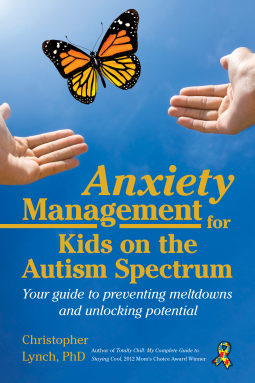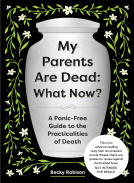
Anxiety Management for Kids on the Autism Spectrum
Your Guide to Preventing Meltdowns and Unlocking Potential
by Christopher Lynch
This title was previously available on NetGalley and is now archived.
Send NetGalley books directly to your Kindle or Kindle app
1
To read on a Kindle or Kindle app, please add kindle@netgalley.com as an approved email address to receive files in your Amazon account. Click here for step-by-step instructions.
2
Also find your Kindle email address within your Amazon account, and enter it here.
Pub Date Jul 01 2019 | Archive Date Sep 10 2019
Talking about this book? Use #AnxietyManagementForKidsOnTheAutismSpectrum #NetGalley. More hashtag tips!
Description
Anxiety can be overwhelming for children with autism. It doesn’t need to be.
The anxiety levels commonly found in children with autism affect social skills, memory, learning, and attention span—and often lead to meltdowns. Those who live or work with kids on the spectrum are acutely aware of how disruptive anxiety can be. However, we are rarely provided with clear guidance on how to manage this anxiety. This book bridges that gap.
Through his twenty-plus years as a clinical psychologist, Dr. Lynch has devoted his career to relieving distress in kids with autism and related disorders. Lynch identifies five factors that are commonly known to elicit anxiety in children with autism and breaks down how to tackle each topic in a manageable and effective way. These factors include:
With this clear and comprehensive guide, parents, teachers, and therapists can take the first crucial step towards managing anxiety, relieving distress, and unlocking potential.
Available Editions
| EDITION | Other Format |
| ISBN | 9781941765982 |
| PRICE | $16.95 (USD) |
Average rating from 14 members
Featured Reviews
 Cynthia D, Reviewer
Cynthia D, Reviewer
My rating: 5/5
I have quite a bit of experience around anxiety and the causes around anxiety, but wanted to get a deeper understanding of the differences for kids with autism. I have absolutely no background on autism, so this is totally new for me. This book was quite eyeopening: it clearly spelled out different circumstances where a child may break down, and goes into the possible reasons behind why it might've happened although it might've looked like it came on from nowhere. The author goes into a lot of the common reasons of anxiety and breakdowns for these kids, which makes a lot of sense with the background knowledge he supplies throughout the book.
I found this to be extremely educational. Even for a person with little to no background knowledge on the subject, I could easily understand what was being discussed. This could possibly be of use to other populations of kids who also have issues with anxiety, such as kids with ADHD or overly sensitive children, that can be easily overwhelmed. As a layperson, it also humanizes some of what we see in public when we see children who break down, and it isn't always something that the parent can control.
 Reviewer 34846
Reviewer 34846
Excellent ! A must read for parents and teachers.
As someone on the spectrum, I could have done with my parents and teachers reading this when I was in school.
Review is scheduled for publication date .
—-Anxiety Management (JUL19)for Kids on the Autism Spectrum: Your Guide to Preventing Meltdowns and Unlocking Potential by Christopher Lynch
July 1, 2019
Future Horizons
Non-fiction, parenting, Autism
135 pages
Rating:
I received a digital ARC of this book from NetGalley and Future Horizons in exchange for an unbiased review.
I found the book very informative. I have ALOT of experience with autism and it’s related issues, specifically anxiety. This author does a great job with breaking down the complexities of autism by focusing on anxiety, a key component. Understanding the causes of anxiety in children with autism can hopefully provide insight into their challenges and how to help. From experience, its easier to empathize when one understands. The suggestions in this book for anxiety are very specific to the autism spectrum population in particular. Unless, a person has an understanding of autism and it’s challenges the techniques listed will be difficult to comprehend. The coping skills necessary are almost opposite what one might typically do to manage anxiety.
 Cristie U, Book Trade Professional
Cristie U, Book Trade Professional
I work as an instructional aide in a school and there are many autistic students that I have worked with. I found the advice the author provided to be really useful and relevant.
 Morgan S, Reviewer
Morgan S, Reviewer
I received an advanced reader's copy in exchange for an honest review
I learned a lot from this book about how anxiety manifests in ASD kids and how to help them through it. I've been through a lot of these scenarios and I never considered any of it to be anxiety but reading this it makes a lot of sense and fills in a lot of the gaps. Definitely crucial for any parent or professional working with ASD kids, wish I had read something like this in my education/social work classes.
 Terry B, Reviewer
Terry B, Reviewer
This book has a gold mine of information for the parent(s) of a child with autism! You will discover strategies for identifying and reducing distracting noises, lights, and situations that autistic children are sensitive to.
You will learn why food can be a behavior trigger because of its’ appearance, taste or smell. If you can encourage your child to help prepare different types of food, they may then view food as something fun and interesting.
A child with tactile sensitivity may be able to have clothes without tags or seams as some manufacturers have started producing clothing like this.
Tactile behaviors such as rocking back and forth and chewing on pencil tops can be redirected to other types of good behavior with positive reinforcement.
A harsh or distracting type of light can be adjusted to natural light or the bulb can be changed to a softer type of light.
Social situations “Social situations are full of cues that help guide us through an interaction. Some of these are physical cues such as eye contact, body language, and the way a person is dressed. Other cues are language-based such as tone of voice, voice volume, and conversational prompts. Some cues can be too abstract or subtle, such as the use of sarcasm. Kids with autism tend to miss or misinterpret social cues and, thus, may not understand the true meaning of an interaction.” Role modeling what do or not do in social situations will help in dealing with social situations, playing games they know how to play will help, as will limiting social interactions to one or two people to gain confidence in their abilities.
You will be encouraged to help your child become less rigid, open to new experiences and feel comfortable socially by applying some of these principles.
Readers who liked this book also liked:
Jennifer L. Armentrout and Rayvn Salvador
Reference, Romance, Sci Fi & Fantasy
Publishers Lunch
General Fiction (Adult), Nonfiction (Adult), Teens & YA
Becky Robison
Business, Leadership, Finance, Parenting, Families, Relationships, Self-Help


















